Hello, Joppa birders!
Steve Walch and I led today’s edition of Wednesday Morning Birding out of Joppa Flats Education Center and on to Plum Island. With high tide around 9:00 a.m., we headed immediately to Sandy Point and were fortunate enough to find parking for our caravan. Skies were partly cloudy; temps in low to upper 60s; and winds NW-SW/5-10 mph.
By the time we arrived at Sandy Point, the tide had fallen a bit, enough so that we did not find any roosting shorebirds before the bend to the beach. Around the bend, other birders were intent on shorebirds present around and in a muddy inlet. There was a good mix, including many Semipalmated Plovers and Sandpipers, along with some Sanderlings and a few Dunlins, the latter two species in their nonbreeding, winter plumage. A few of us were able to pick out a single Western Sandpiper, evident by its russet scapulars and crown. No doubt, there was another species or two as the shorebird migration winds down. Being careful not to disturb these energy-conserving birds making their long movement south, we were able to creep fairly close without alarming them. However, the bane to all shorebird-watching birders, a Peregrine Falcon, made its presence known as all of the pipers and plovers took flight — there had to be a good 200 to 300 birds in the air all at once after the falcon made its strafing run and then continued on its way north out over Stage Island Pool. Of course, these birds expended a lot of energy with their falcon alarm, which, needless to say, offered us some spectacular views of jinking and swirling shorebirds — amazing stuff; lots of “Oooos and ahhhhhs!” How do they do that?! All very nice, but that Peregrine episode meant the end of our shorebird watching on Sandy Point as they all eventually flew off after several passes and potential landings. Initially, some of us thought that Turkey Vultures soaring above were the reason some shorebirds spooked and took off, but then, the real culprit showed up . . . .
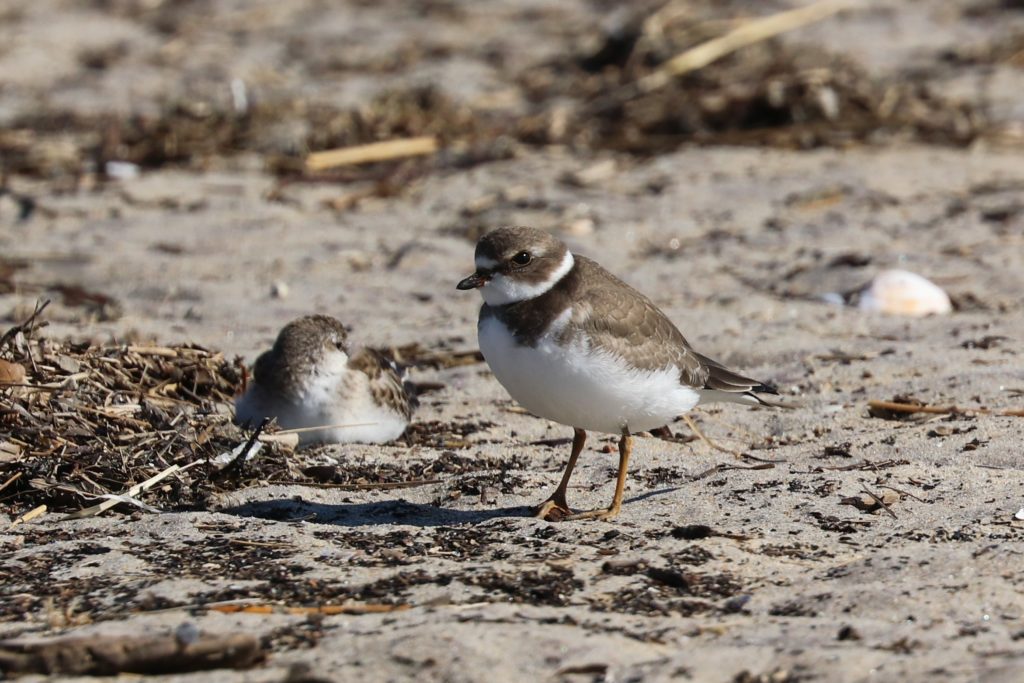
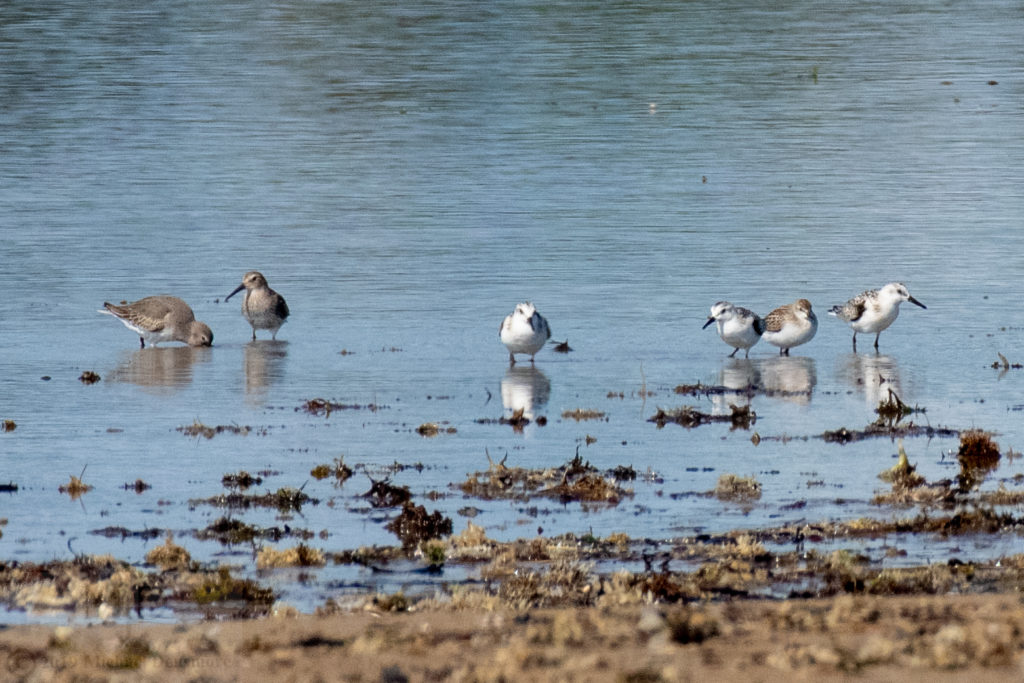


A number of gulls were loafing at the edge of the beach, including a number of Ring-billed Gulls, some Herring Gulls, and a few Great Black-backed Gulls. We looked in vain for the Lesser Black-backed Gull and Black Skimmers seen a few days earlier. And, nary a tern did we see . . . . there was a Caspian Tern seen in the last day or two.
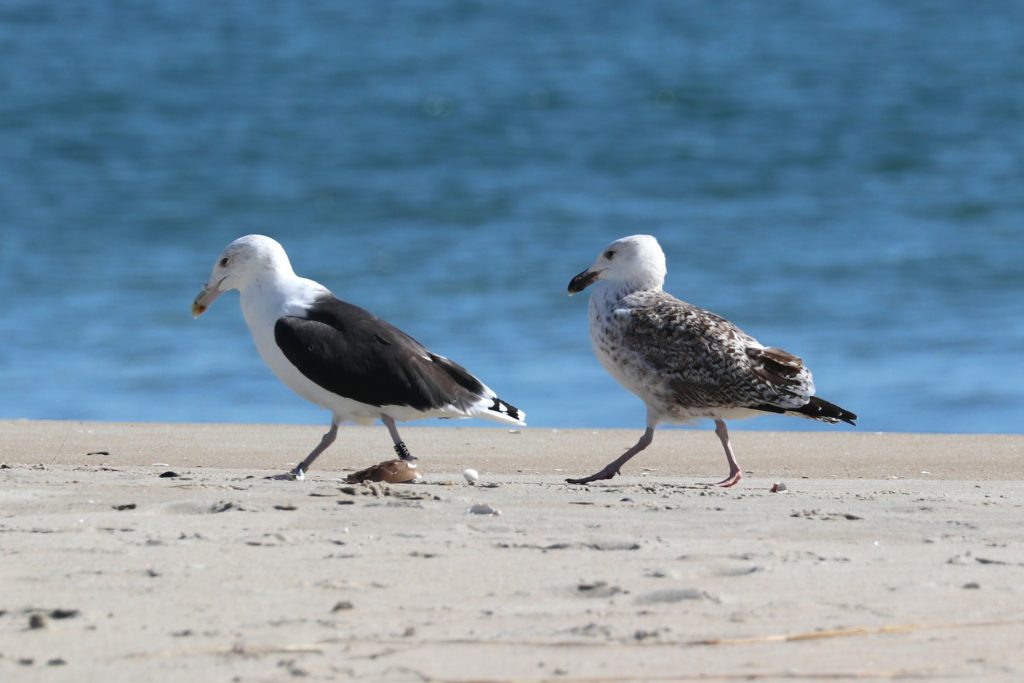
From Sandy Point, we made a brief visit to Stage Island Pool, but saw very little of interest and continued on to Hellcat. Scattered about in the marsh along the way, a few Great Egrets were still present. At Bill Forward Pool, the young Gadwalls we have been watching over the past couple of months, now fully grown, were looking very spiffy in their juvenile plumage. Also present were a number of juvenile Green-winged Teal, the smallest of the dabbling ducks. Their size is an excellent aid to identification, especially when they are near a larger species like a Gadwall — remarkable size difference. While we were looking at yellowlegs and dowitchers in the North Pool from Hellcat Dike, Susan Yurkus alerted us to the bird of the day, a Whimbrel! It turned out to be a very accommodating bird as it foraged for insects on the Bill Forward Pool dike just south of the observation tower. This curlew, genus Numenius, was in the crisp, uniform plumage of a juvenile. It’s a member of the large shorebird family Scolopacidae. According to Wikipedia, it is one of the most widespread of the curlews, breeding across much of subarctic North America, Asia, and Europe as far south as Scotland.
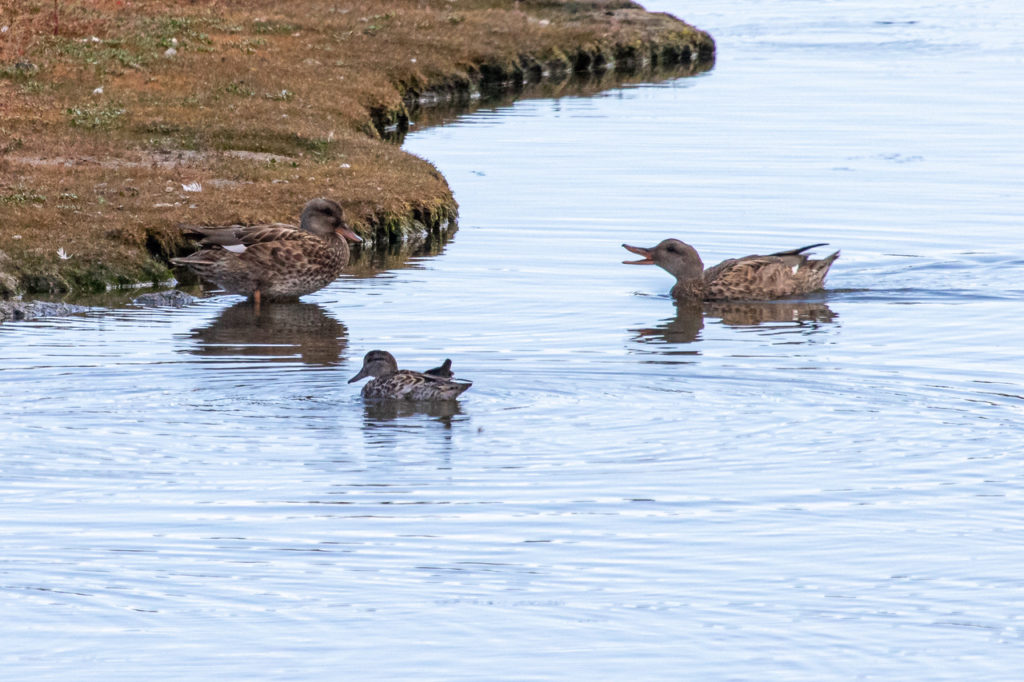
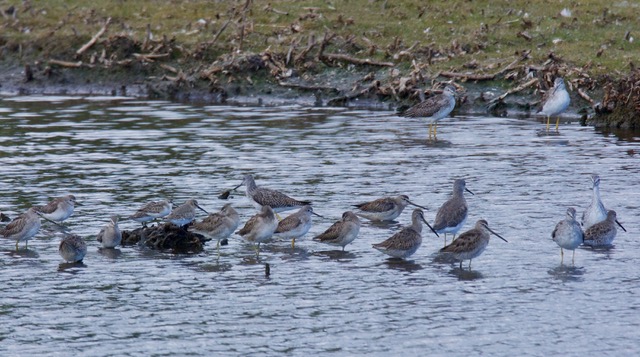
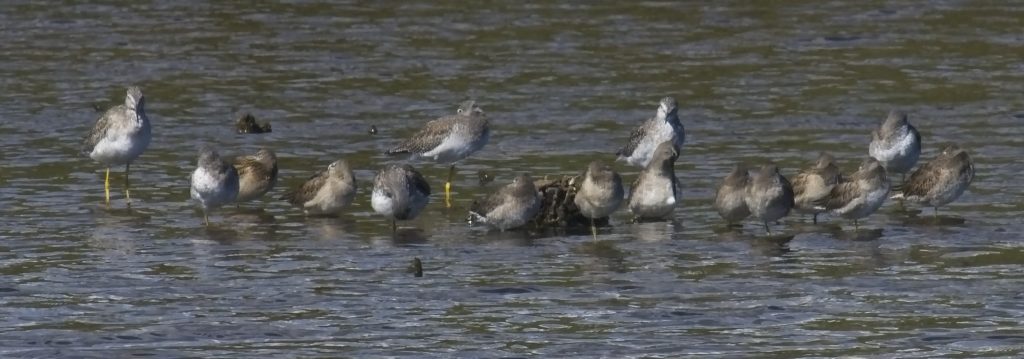
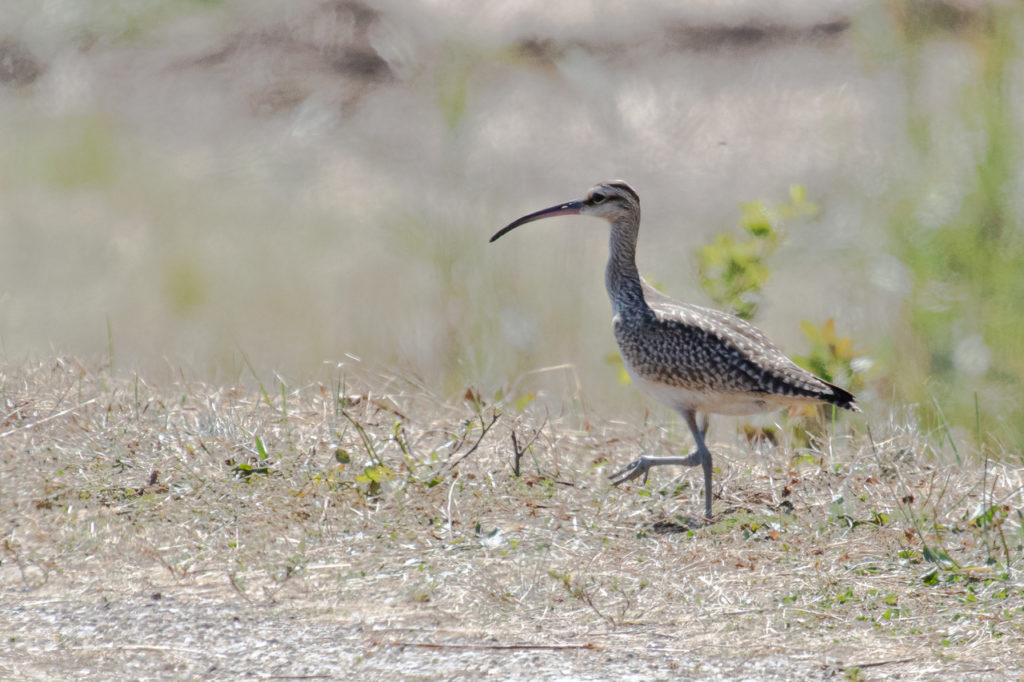
As we readied to head back to the parking lot and then on back to Joppa, a Snowy Egret flew into the North Pool. Surely, this must be one of the only Snowies, if not the only one, remaining on Plum Island. We could tell that it was a juvenile from the color of its legs — yellowish-green on the back and black on the front.

Next Wednesday is October 2 – yup, already! I hope that you will join us for another fun morning of birding . . . .
Cheers and warmest regards!
Dave Weaver
Our list:
Gadwall (5) – Bill Forward Pool (BFP).
Green-winged Teal (~ 15) – BFP.
Double-crested Cormorant (~ 6) – various.
Great Blue Heron (3) – BFP & North Pool from Hellcat Dike.
Great Egret (5) – various.
Snowy Egret (1) – North Pool from Hellcat Dike.
Turkey Vulture (12) – overhead, Sandy Point.
Semipalmated Plover – common, Sandy Point.
Greater Yellowlegs (~ 25) – North Pool from Hellcat Dike.
Lesser Yellowlegs (~ 8) – North Pool from Hellcat Dike.
Whimbrel (1) – BFP dike.
Sanderling (~ 5) – Sandy Point.
Semipalmated Sandpiper – common, Sandy Point.
Western Sandpiper (2) – 1, Sandy Point; 1, North Pool from Hellcat Dike.
Least Sandpiper (1) – North Pool from Hellcat Dike.
White-rumped Sandpiper (1) – North Pool from Hellcat Dike.
Pectoral Sandpiper (1) – Sandy Point.
Dunlin (3) – Sandy Point.
Short-billed Dowitcher (9) – North Pool from Hellcat Dike.
Ring-billed Gull (~ 20) – Sandy Point.
Herring Gull (~ 15) – Sandy Point.
Great Black-backed Gull (6) – Sandy Point.
Peregrine Falcon (1) – Sandy Point.
Blue Jay (1)
American Robin (~ 10) – Sandy Point & roadside.
Northern Mockingbird (3)
European Starling
[Cedar Waxwing – several, Joppa Flats Education Center.]
Savannah Sparrow (1) – Sandy Point.
Song Sparrow (5) – Hellcat.
Northern Cardinal (1)

